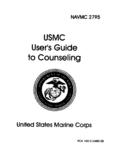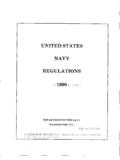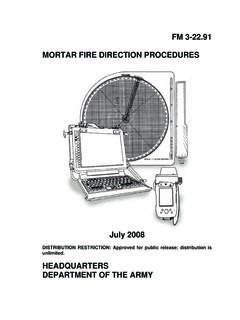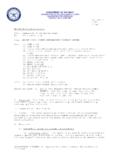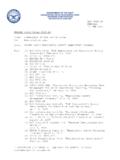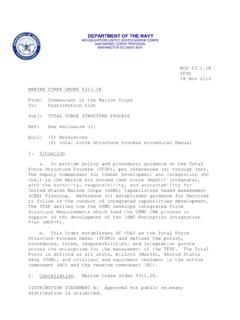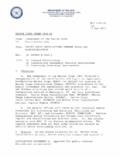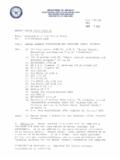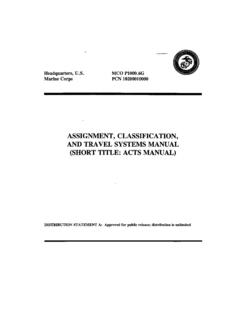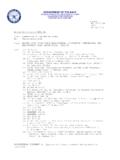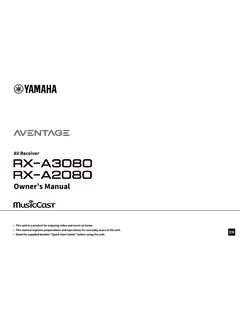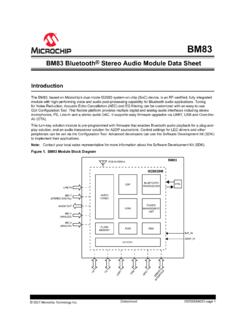Transcription of USMC FINANCIAL GUIDEBOOK FOR C OMMANDERS
1 USMC FINANCIAL GUIDEBOOK . FOR. C OMMANDERS . Headquarters, Marine Corps NAVMC 2664 REV PCN 10001335200. DEPARTMENT OF THE NAVY. HEADQUARTERS UNITED STATES MARINE CORPS. 3000 MARINE CORPS PENTAGON. WASHINGTON, DC 20350-3000. NAVMC 2664. RFR. APR 32009. FOREWORD. 1. PURPOSE. The successful management of limited resources is a true measure of a Commander's ability to effectively prioritize and employ forces to defeat the enemy. sound FINANCIAL management facilitates the Marine Corps mission to make Marines and Win Battles. This GUIDEBOOK is intended to be a ready reference desk guide that the USMC Commander can use to identify fiscal requirements, allocate FINANCIAL resources, execute a budget, prepare for audits and inspections, and comply with Federal law, as well as Navy and Marine Corps policies. The information contained in this document was checked for accuracy at the time of editing. However, the information may be outdated due to the dynamic nature of FINANCIAL management, and the frequently changing policy environment.
2 Therefore, this GUIDEBOOK should be used as an informational guide, and before any action is taken, it is recommended that the reader check with the command Comptroller for the most up-to-date policies. 2. CANCELLATION. NAVMC 2664 of June 12, 1998. 3. INFORMATION. Your command and legal responsibilities make you accountable and responsible for your activity's FINANCIAL management team. Accordingly, Commanders need to be aware of their responsibilities as a fund manager as detailed in the Department of Defense FINANCIAL Management Regulation (DoD FMR), Volume 14, Chapter 1. To assist you, this publication provides a description of your basic FINANCIAL management responsibilities and procedures. 4. REQUISiTIONS. For requisitioning instructions, refer to MCO W/CH 1-3, Marine Corps Publications and Printing Regulations. 5. CERTIFICATION. Reviewed and approved s date. D. D. Thiessen, Lieutenant General Deputy Commandant, Programs and Resources DISTRIBUTION STATEMENT A: Approved for public release; distribution is unlimited.
3 DISTRIBUTION: PCN 10001335200. NAVMC 2664. LOCATOR SHEET. Subj: USMC FINANCIAL GUIDEBOOK FOR COMMANDERS. Location: (Indicate location(s) of copy (ies) of this Manual.). 11. RECORD OF CHANGES. Please log completed change action as indicated. Signature of Person Change Number Date of Change Date Entered Incorporated Change 111. CONTENTS. Page I. USMC BUDGET 1. introduction 1. Overview of the Planning, Programming, Budgeting and Execution (PPBE) Process 1. PPBE Process 1. Program Objective Memorandum (POM) 1. Budget Formulation 2. Mid-Year Review 2. Budget Execution 2. Money Flow 2. HQMC 3. Operating Budget (OPBUD) 3. Sub-Operating Budget (SUBOPBUD) 3. Allotments 3. Major Command Recipient Identifier (MRI) 3. Allotment Recipient Identifier (ART) 3. Sub-Allotment Recipient Identifier (SRI) 3. Work Center Identifier (WCI) 4. Budget Execution Activities (BEA) 4. Budget Execution Sub-Activities (BESA) 4. Types of Appropriations 4.
4 Marine Appropriations sometimes referred to as Green Appropriations 4. Military Personnel, Marine Corps (MPMC) 4. Reserve Personnel, Marine Corps (RPMC) 4. Operations and Maintenance, Marine Corps (O&MMC) 5. Operation and Maintenance, Marine Corps Reserve (O&MMCR) 5. Procurement, Marine Corps (PMC) 5. Procurement of Ammunition, Navy and Marine Corps (PANMC) 5. Navy Appropriations sometimes referred to as Blue Appropriations 5. Navy Working Capital Fund (NWCF) 5. Nonappropriated Funds (NAF) 6. iv II. COMMAND FINANCIAL MANAGEMENT 7. Overview 7. Commanders FINANCIAL Responsibility 7. Purpose Statue 8. Time (Bona Fide Need) 8. Amount (Antideficiency Act) 8. Expense/Investment Criteria 9. System Unit Cost 10. Central Management 10. Central Procurement 10. Command Budget Planning 10. Command Budget Execution 11. III. MARINE CORPS MANAGERS' INTERNAL CONTROL PROGRAM (MCMIC) 12. introduction 12. Internal Controls Over FINANCIAL Reporting (ICOFR) Process 12.
5 Overall Managers' Internal Control (OMIC) Process 13. Managers' Internal Control (MTC) Plan 14. Risk Assessments 14. Internal Control Assessment 14. Corrective Action Plan 14. Material Weakness Criteria 14. Managers' Internal Control Program Statement of Assurance (SOA) 15. Audits, Inspections and Assistance Visits 15. Resource Evaluation and Analysis (REA) 16. Marine Corps Administrative Analysis Team (MCAAT) 17. Marine Corps FINANCIAL Evaluation and Analysis Team (MCFEAT) 17. Marine Corps FINANCIAL Management Operations Support (MCFMOS) 17. IV. CONTRACTING AND ACQUISITION 18. Contracting Supplies and Services 18. Contracting Activities 18. Contracting Authority Levels 18. v Acquisition Cycle 18. Buying Goods and Services 19. Simplified Purchases 19. Micro-Purchases 19. Purchase Orders 19. Blanket Purchase Agreement (BPA) 19. PR Builder 19. Command Priorities 19. Contract Regulations / Guidance 20. Warfighting Requirements 20.
6 V. FREQUENTLY ASKED QUESTIONS (FAQs) 22. Basic Questions 22. What are my FINANCIAL duties and responsibilities? 22. What should my fiscal Marines be doing to support our fiscal mission? 22. What are the limits on my FINANCIAL authority? 22. What are my execution goals? 23. What are my dollar value limits on execution? 23. What is an unauthorized commitment? 23. What is my contracting authority? 24. What is MyPay? 24. How are my civilians paid? 25. Mission Accomplishment 25. How do I request funds? 25. What can we spend during a Continuing Resolution Authority (CRA) period? 26. How should we 'manage' unfunded requirements? 26. Why are Unliquidated Obligations (ULO) important? 26. Why are Outstanding Travel Orders (OTO) important? 27. Why are Outstanding Travel Advances (OTA) important? 27. Why are outstanding commitments important? 27. Why are Unmatched Disbursements (UMD) important? 27. Why are Negative Unliquidated Obligations (NULO's) important?
7 28. vi How can I get outside assistance for FINANCIAL Management? 28. Appropriations I Authorization Funding 28. What are expiring funds? 28. When can funding execution cross fiscal years? 28. What are my limits on Official Representation Funds (ORFs)? 29. Procedurals DOs and DON'Ts 30. How does USMC fund contingency operations? 30. Why do I need to do a reimbursables? 30. How do we pay for other DoD Service / Agency support? 30. How do we pay for assisted acquisitions outside DoD? 31. What is the Government Travel Charge Card Program (GTCCP)? 31. What is the Government-wide Commercial Purchase Card (GCPC)? 31. Can I buy command medallions (coins)? 32. How do I fund conferences? 33. How do we buy computers, IT equipment? 33. What can I do to pay for the annual Marine Corps Birthday Ball? 34. Can I split one large purchase into smaller purchase with the GCPC? 35. Can I buy business cards? 35. Can I purchasing liberty attire for Marines in foreign destinations?
8 35. My Marines are in the field, can I use O&M funds to purchase water? 35. Can I use my O&M to provide coffee and donuts for my official meetings? 36. Can I use APF to pay for a fine that a Marine received while on official duty? 36. Can I use the Unit GCPC to place a deposit for a good or service? 36. What is a Business Process Improvement (BPI)? 36. VI. APPENDICES 37. A. Acronym Glossary 37. B. USMC FINANCIAL Management Marine Corps Orders 41. C. Useful Web Links 42. D. Other Suggested Links 43. vii CHAPTER I. USMC BUDGET. introduction . FINANCIAL Management is inherent in command. Your job is to ensure funds entrusted to you are legally and judiciously spent. Since the onset of Operation Iraqi Freedom, annual Emergency Supplemental spending bills to finance the costs of operations in Iraq and Afghanistan, as well as training, pre- and post- deployment, and equipment reset/reconstitution costs have provided a significant increase to the Marine Corps Total Obligation Authority (TOA).
9 However, with Supplemental costs expected to migrate to the Marine Corps baseline in Fiscal Year (FY) 2010 and competing federal spending priorities putting pressure on future year Department of Defense (DoD) budgets, Commanders must ensure they are able to effectively articulate requirements and place constrained resources where they will best accomplish unit missions and objectives. OVERVIEW OF THE PPBE PROCESS. The Planning Programming Budgeting and Execution (PPBE) Process serves as the means for allocating resources and is a continuous overlapping cycle. Deputy Commandant, Programs and Resources (DC P&R), in concert with the other Deputy Commandants (DC), formulates the Marine Corps planning guidance which in turn supports the planning guidance directed by the President of the United States (POTUS), Joint Chiefs of Staff (JCS), and the Secretary of Defense (SECDEF). The Commandant's Planning Guidance (CPG) and the Marine Corps Master Plan (MCMP) serve as the base documents for building your program and your budget.
10 For Battalion level commands, your supply officer will work in concert with the Comptroller on the various budget calls. These documents can be provided to you by your servicing Comptroller. As a Commander, the following major PPBE cycles impact you. The Program Objective Memorandum (POM) operates as a means for the Marine Corps to "right-size" requirements and programs. It translates into a 6 year Defense Program. The POM occurs during even years. For example, POM 12 will be conducted in FY 2010. During odd years, a program review will occur. This review allows Commanders to tweak the work accomplished during the POM. As a Commander, your role in the POM process is relatively straightforward; every two years articulate what you can do within constraints of POM funding, or ceiling tracks, and what you can't do with the funding you don't get. Requirements should be prioritized as Mission Critical, Mission Essential, or Mission Enhancement, and include urgent emerging requirements.
